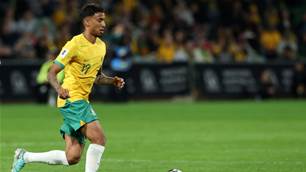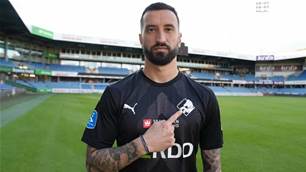FFA technical director Han Berger explains the progress of our National Curriculum.
Berger feels that in Australia, parents often lack the knowledge about what is best practice and what is in the interest of their kids. “When parents pay fortunes to academies and clubs, all they want to hear is how good their kid is and that they might get to an overseas club,” says Berger. “Many parents are focused on getting their kids overseas at the youngest possible age and this puts an unhealthy psychological pressure on the kids. Unfortunately in the media you only read the success stories, but for every success story there are a hundred, often very sad, stories of the ones who did not succeed. In addition many parents do not seem to be aware that FIFA rules do not allow young players to move overseas before they are 18 years-old.”
There is a traditional mentality in Australia that England, and its EPL, is the shining beacon that all young Aussie players should aspire towards. Berger outlines that recent research from England has suggested that the EPL academy system is light-years behind the likes of Holland and Spain. “Without wanting to make Australia a football colony of Holland, which is often the accusation I receive, it is not without a reason that the biggest league in the world is looking at the Dutch development system,” says Berger. “And of course I’ve used certain elements of the “Dutch school” in our Curriculum, combining them with the strong elements of the Australian sporting culture.
“It would be much better for the majority of young players to mature as a player in Australia before going overseas. When you already have first-team A-League experience, a young player will have a much better chance to succeed.
He will enter an overseas club with a higher ‘profile, will get a better contract and a better opportunity to get into the starting eleven. Players like Tommy Oar, Michael Zullo and Luke DeVere are good examples. This is also beneficial for the future of our national teams because now we see many talented players who go overseas too sit on the bench or in reserve teams.
“I really like to see young players given first-team chances in the A-League. In the A-League, many strikers and playmakers are foreigners, which is not really beneficial if we want to develop more ‘match-winning’ Australian players. Therefore, I advocate measures that would force clubs to only attract quality foreign players and not players who don’t add anything to the A-League. This way young talent hopefully gets the opportunities sooner, although I realise that for the A-League coaches their first priority is results.”
Young Aussie talent did have a chance to prove itself recently in the July FIFA U/17 World Cup in Mexico and the FIFA U/20 World Cup in Colombia the following month. In Mexico, the Joeys exited after a 4-0 defeat to Uzbekistan in the Round of 16, while in Colombia the Young Socceroos finished bottom of their group and lost 5-1 to Spain in their final game. The critics swooped to lambast the squads, coach Versleijen, plus Berger and the Curriculum.
“It is development versus results,” says Berger. “I was told the Joeys made the World Cup final in 1999, but only one player from that team is currently in the Socceroos. What then is the long-term value of that achievement? The Australian mentality is about winning at all costs, while the Dutch approach is about development – the results will come later when it really matters. At those recent youth World Cups the Dutch Under-17s, who are the reigning European champions, crashed in the group stage and the Under-20s did not even qualify. But nobody, including the media, really made a point of this because everybody knows that the system is consistently producing top level players. Because of that, Holland, as a small country, has been for decades a power in world football.”
Berger highlighted that the current Australian youth development process started only two years ago. “Anyone who understands the complexity of such a process knows that it will take time before we will see the changes and improvements. For opportunists it is very easy to criticise the system or the coach based on the youth World Cup performances.
“The Joeys finished 15th in the U/17 World Cup and the Young Socceroos finished 19th which is very much in line with the current position of the Socceroos on the FIFA ranking. So that’s obviously our current position in world football and to be honest, I think that’s quite good,” says Berger. “We should realise that, whether we like it or not, football in Australia is still developing. We do not yet have the football culture of the European and South American nations who we have to compete with at such tournaments. They play football all year round, every day, all day – for them it is a way of life.”
Berger continues that the level at those recent World Cups is higher than the youngsters would have been used to – while the Joeys played as the AIS in the National Youth League last year and fared well. “They were able to dominate and win many games playing the technically sound, possession-based style of football we promote,” says Berger. “Of course at the World Cup they tried to play the type of football they had played all year, but the quality of opposition was so much higher that they simply couldn’t.
I don’t want to sound defensive because there were also lots of positives. Technically we are improving, the FIFA technical report of the U/17 World Cup underlined this. Our teams were among the youngest in both the U/17 and U/20 World Cups because our selection process was based on technical qualities instead of physical qualities. Because of this approach you might lose on the short-term but I’m convinced we will win on the long-term. And, most importantly, there were individual players that stood out in both teams, like Connor Chapman and Dylan Tombidis in the Joeys and Terry Antonis, Tommy Oar and Kerem Bulut in the Young Socceroos. Of course we have also critically evaluated both tournaments and identified key points of improvement that we’ve already started working on,” adds Berger.
The reaction to the performances at the U/17 and U/20 World Cups not only highlighted that educating fans on the FFA ethos of “development over results” is going to be a long slog for Berger and his Curriculum. But it was also a sobering reminder that fostering a culture and environment, so we can produce match-winning players, is a long road too. One that we hope, with enough time, will be filling our Socceroos squads for years to come.
This article appeared in the December 2011 issue of Australian FourFourTwo magazine. To buy back copies of this issue call 03-8317-8121 with a credit card to hand.
The current edition of Australian FourFourTwo has just gone on sale in newsagent across the country, or you can subscribe here
Related Articles

Socceroos midfielder embraces move to England

Cardiff City snap up sought-after Socceroos starlet













